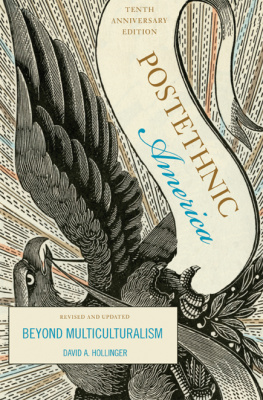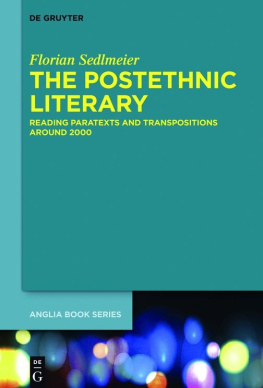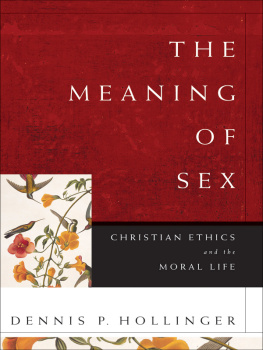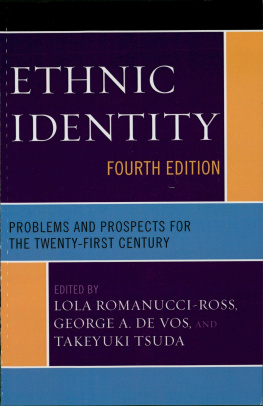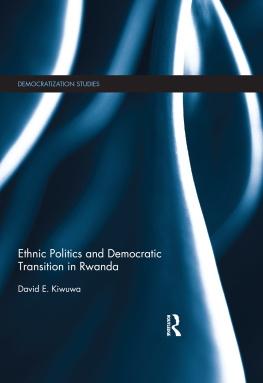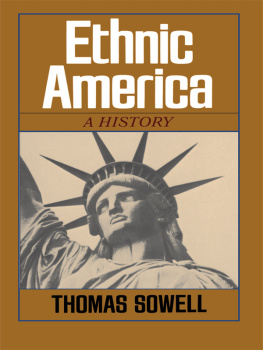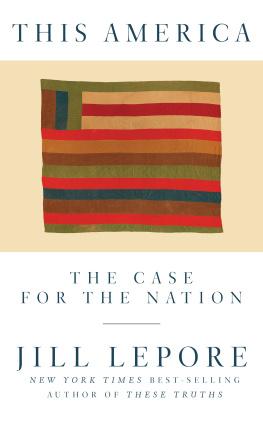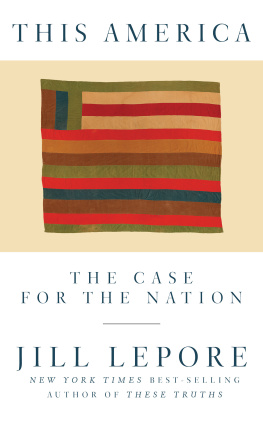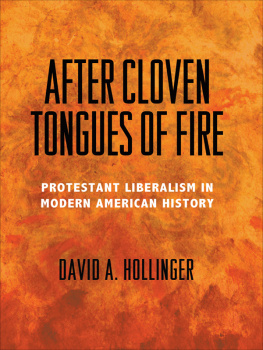POSTETHNIC AMERICA
POSTETHNIC AMERICA
Also by David Hollinger
The American Intellectual Tradition: A Sourcebook
Co-Edited with Charles Capper
Science, Jews, and Secular Culture: Studies in
Mid-Twentieth Century American Intellectual History
In the American Province: Studies in the History and
Historiography of Ideas
Morris R. Cohen and the Scientific Ideal
POSTETHNIC
AMERICA
BEYOND MULTICULTURALISM
David A. Hollinger
TENTH ANNIVERSARY EDITION WITH
A NEW POSTSCRIPT BY THE AUTHOR

A Member of the Perseus Books Group
Copyright 1995, 2000 by Basic Books
A Member of the Perseus Books Group
All rights reserved. No part of this book may be reproduced in any manner whatsoever without written permission except in the case of brief quotations embodied in critical articles and reviews. For information, address Basic Books, 10 East 53rd Street, New York, NY 10022-5299.
Designed by Ellen Levine
Library of Congress Cataloging-in-Publication Data
Hollinger, David A.
Postethnic America: beyond multiculturalism / David A. Hollinger.
p. cm.
Includes bibliographical references and index.
ISBN 0-465-05992-9 (paper)
2005 Edition:
ISBN 10: 0-465-03065-3; ISBN 13: 978-0-465-03065-1
1. Pluralism (Social sciences)United States. 2. MulticulturalismUnited States. 3. United StatesRace relations. 4. United StatesEthnic relations.
I. Title.
E184.A1H64 1995
305.8'00973dc20
9440366
06 07 08 / 15 14 13 12 11 10 9
To my Berkeley colleagues
CONTENTS
Postscript 2000:
Color, Culture, and Solidarity
Postscript 2005: Ethnoracial Mixing and
Economic Segregation
V isiting New York City for the first time in 1967, I was astonished to see at the corner of Seventy-second Street and Broadway a group of Amish men. The long beards, wide-brimmed hats, and plain black coats identified them for me as some kind of Pennsylvania Dutch. They reminded me of photographs of my grandfather. In an instant I realized that they could not actually be Amish. Neither the hats nor the coats were quite right, and I could not imagine the stay-at-home Amish making even a brief visit to Manhattan. Clearly, they were members of some other group. So, I said to my fiance, a native New Yorker, Look at those Mennonites, or they may be Old Order Dunkers. She smiled patiently and said, No, those are Hasidic Jews. Then she added, My roots, not yours.
If yet another lesson were needed in how little one learns about people from appearances and in how greatly appearances themselves depend upon the beholders eye, here it was. The plain attire had served my imagination the way skin color and facial shape often serve to make Koreans and Japanese look alike. The cultural differences between a family of fifth-generation Boston Unitarians and a family of fifth-generation Texas Baptists will be missed if we see only that both families are black. Or white. Bodily shapes and colors are not so easily changed as suits of clothing, but they are often taken as indicators of a persons culture.
The multiculturalism of our own time has helped us to recognize and appreciate cultural diversity, but I believe this movement has too often left the impression that culture follows the lines of shape and color. There is no doubt that racist understandings of what shape and color mean have limited the kinds of cultural choices and creativity people can achieve. But Postethnic America is written in the belief that Americans need to push yet harder against the authority that shape and color have historically been allowed by society to exert over culture.
This essay on cultural diversity in the United States grows directly out of my experience as a historian specializing in the history of American academic and literary intellectuals. Among my long-term interests has been the transformation of American intellectual life by the ethnic and religious diversification of its demographic base. In the late 1980s and early 1990s I began to supplement these historical interests with more contemporary engagements. At a series of conferences and campus workshops, I tried to contribute historical perspectives on the multiculturalist debates and found myself increasingly caught up in these debates themselves.
I want to acknowledge the criticism and encouragement of a number of colleagues and friends, especially within the remarkable faculty of the University of California at Berkeley. I cannot list here the names of all the people I have in mind when dedicating this book to my Berkeley colleagues. This large company includes many people not involved in the particular project of writing this book. I cannot even mention all those from whom I have learned something important about the issues addressed in the book. Yet I do want to thank Thomas W. Laqueur, Thomas C. Leonard, Robert C. Post, and Yuri Slezkine for detailed and extremely valuable advice. I am also grateful for the collegial stimulation on diversity issues provided by Todd Gitlin, Jon Gjerde, Martin Jay, Peter Sahlins, Jeremy Waldron, and Reginald Zelnik. I owe a special debt to Carol J. Clover, who, more than any other single person, persuaded me that what I had to say about multiculturalism must be in the form of a book rather than merely articles in scattered journals.
Beyond Berkeley, I have profited greatly from the critical suggestions of Thomas Bender, Charles Capper, Kenneth Cmiel, Judith DeWoskin, Kenneth DeWoskin, Don Herzog, Daniel J. Singal, and Ronald G. Walters. At Basic Books, I have been blessed to have so able an editor as Steve Fraser. Paul Davies and Charles Raymond Katz have performed a variety of library-related tasks with an efficiency and goodwill for which I am grateful. My greatest debts, intellectually and personally, are to my wife, Joan Heifetz Hollinger.
Some sections of this book are taken from three articles previously published: Postethnic America, Contention 2 (1992); How Wide the Circle of the We? American Intellectuals and the Problem of the Ethnos Since World War II, American Historical Review 98 (1993); and Cultural Pluralism and Multiculturalism, Blackwells Companion to American Thought (1995).
November 1994
* * *
How can a democratic society achieve political cohesion while recognizing cultural diversity? The inability of most immigrant-receiving western European nations to come up with good answers to this question has become increasingly apparent during the ten years since I first published this book. As European societies struggle with the diversity presented by their Muslim populations, the perspective on culture and politics outlined in Postethnic America seems to me all the more pertinent to global as well as to America-centered discussions. Hence I am grateful to Lara Heimert of Basic Books for inviting and overseeing the publication of this new, tenth anniversary edition, which includes a new chapter, Postscript 2005: Ethnoracial Mixing and Economic Segregation. The text is otherwise exactly as it was when first published 1995 and as supplemented by Postscript 2000 in the second edition.
Berkeley, California
August 2005
M ulticulturalism is a prodigious movement, but its limitations are increasingly apparent. It has not provided an orientation toward cultural diversity strong enough to process the current conflicts and convergences that make the problem of boundaries more acute than ever. Mixed-race Americans demand recognition from the United States census, while many black politicians defend a one-drop rule for identifying African Americans that was designed to serve slaveholders and white supremacists. Womens rights activists try to help victims of clitoridectomy, while cultural relativists warn that westerners have no standing to instruct Saudis and Sudanese on culturally specific rights and duties. Educational reformers add new cultures to school curricula, while guardians of civility demand the banning from campuses of speech that might offend certain groups. Illegal immigrants from Mexico complicate the public services of California, while prophets of postnationality explain that the boundary between the United States and Mexico is an imperialist fiction.

